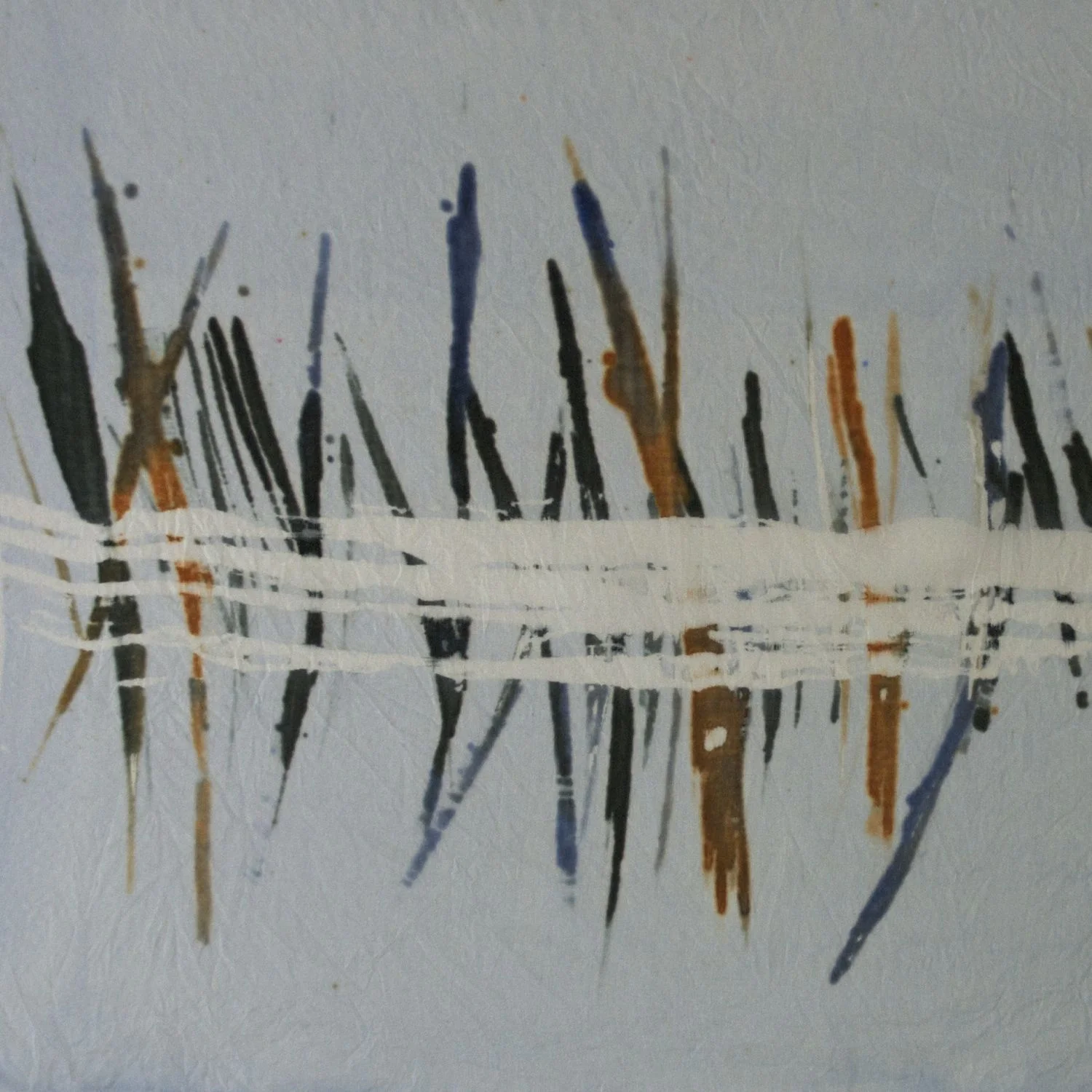At this year's Festival of Quilts in Birmingham is an exhibition of work by American quilt artist, Ann Johnston. Until now, I've known her work only through her books. Her two books on dyeing are some of the best on the subject as far as I'm concerned. They manage to be comprehensive (in terms of the range of dye techniques they cover), totally sound on the technical aspects and yet easy to use. I've had my copies for years and still refer back to them.
The exhibition presents 16 quilts. As the accompanying book explains, "The word "contact" refers to a place where geologic units touch each other." Many of the quilts represent geological features - veins, intrusions, geological processes - close up or impressionistic images of the rocks themselves or abstract interpretations of the processes that lead to their formation.
Other quilts present images of the mountains of the Sierra Nevada themselves. Because "..."contact" also conjures up a human influence on the landscape. The forests, the rivers, and even the mountains themselves have been shaped forever by people seeking their fortunes." For this was gold mining country and many of the quilts refer to this.
One of the impressive things about this body of work is the stylistic variety between the different pieces, while they remain totally cohesive as a group. Bold pieces built of simple forms in strong, plain colours hang alongside more complex, designs built up of highly detailed visual textures. Abstract images alongside highly realistic pieces. It worked because there were clear relationships between the pieces.
All the quilts are made from cloth that Ann Johnston has dyed, painted or printed using a wide range of surface design techniques. Inevitably, I was drawn to studying the detail of these. I was particularly fascinated with her use of monoprinting and resists - and Ann was very generous in explaining how she had achieved some effects. I also noted how she worked back into the painted cloth, using appliqué and stitch to alter and augment the dyed marks. But over and above these technical aspects, I really admired the mastery with which Ann had orchestrated the different patterns and textures in her fabrics to produce the effects she wanted.
Above (clockwise from top left): details from "Cracked and Cooked"; "Black and White"; "Vigil" and "After the Ice". All work by Ann Johnston.
I was also able to hear Ann's lecture "The Stitches Matter" in which she talked about the way she uses stitch to add layers of marks, line and detail to her dyed cloth. I had already noted that her approach to stitching each piece was quite varied from one to the next but always well considered in terms of the effect she wanted to achieve.
For more information, go to Ann Johnston's web site, where you can order copies of the exhibition catalogue along with her other books. Ann has also produced a DVD, Color by Accident, which expands upon her book of that name and is well worth having.























































































































